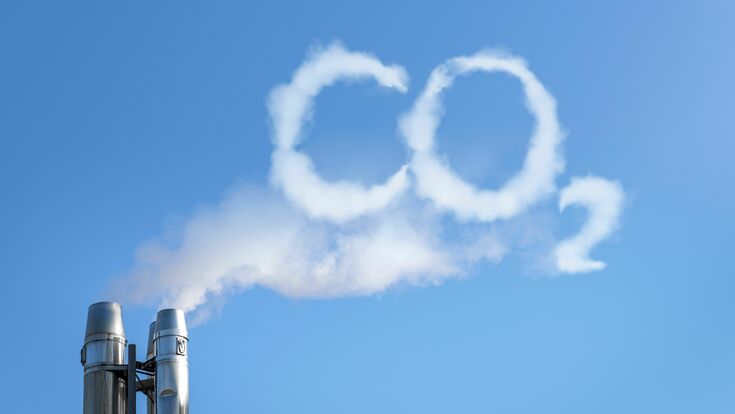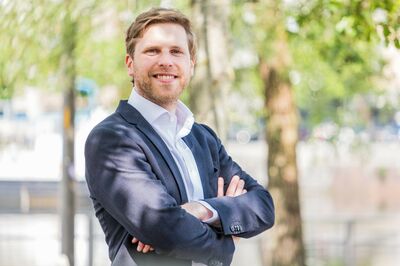Carbon Capture : 11 reasons why Carbon Capture should be prioritized in the waste to energy sector

1. Methane
Methane’s impact on climate change is 84x higher than CO2 on a 20 year basis and 18% of global anthropogenic methane originate from landfills due to the decomposition of organic waste fraction.
With, 70% of the two billion tons of waste generated each year being still landfilled, it goes without doubt that the current climate impact of landfilling is enormous.
The emission factor of one ton waste landfilled is between 600 and 5000kg of CO2eq. Here lies a gigantic opportunity and urgency for the waste sector to reduce its climate impact by diverting waste from landfills to waste to energy (WtE) and recycling. The emission factor of WtE can even become negative by implementing Carbon Capture and Storage (CCS)
2. Negative emissions
A WtE facility produces two types of CO2: non biogenic emissions from fossil related waste such as non-recyclable plastics and biogenic emissions from biogenic waste such as non-recyclable paper. Biogenic emissions are considered carbon neutral because they contain carbon that was originally present in the atmosphere. In case a WtE facility is combined with a CCS facility this CO2 is captured and stored permanently under the ground which means that this biogenic CO2 is not released in the atmosphere and is considered as a negative CO2
emission.
Such negative emission can be used to compensate emissions of hard to abate sectors like aviation.
3. Proven technical viability
CC is already being implemented successfully in a number of installations in the Netherlands and will be implemented in Norway after a detailed feasibility study
4. Stable and reliable operation
It is a continuous process running twenty-four hours a day, seven days a week, with a high availability (typically above 90%). This is very useful and far easier to manage for the CO2 capture process and offtake whether the CO2 is to be stored or utilised.
5. Long term assets
WtE plants are typically backed up by long term Waste Supply Agreements and Power Purchase Agreements and are local per definition usually close to the waste source and energy offtake. WtE plants cannot be relocated in other geographies with lower energy- or labour costs for example.
When CC is integrated in the WtE sector, there are new sources of revenue possible like negative CO2 emissionsDr. Tom Croymans, Innovation Manager
6. Ready to be deployed
According to the National Academy of Sciences, Engineering and Medicine’s BECCS (Bio Energy Carbon Capture Storage) technology is ready for large scale deployment. With 2500 WTE installations in operation and a capture efficiency of 90% this would result in 378 million tons of CO2 captured per year instead of being released and in 210 million tons of negative CO2 emissions

7. Scale range
Due to its scale range from a few thousand tons to more than a million tons of yearly CO2 emissions, the WtE sector can be a very interesting sector to scale up & test new technologies.
8. Integration and synergies
The steam of the WtE plant can be used for the reboiler and reclaimer of the CC plant. As the steam is not send to the condenser, spare cooling capacity becomes available. Synergies between the Carbon Capture and WtE process save CAPEX, OPEX and space, and ultimately decrease the total cost of capturing CO2 (vs a stand alone CC plant). Other potential synergies include combining the flue gas cleaning systems.
The extent of integration will influence the total cost of carbon capture. The better & more optimized the integration, the lower the overall cost.

Due to the production of negative emissions WtE + CCS are uniquely positioned to fight climate change.Benoit Englebert, Sales & Business Development Manager
9. Cost competitiveness
Compared to the implementation of carbon capture in other industrial sectors, the cost in the WtE sector is very competitive.
10. Renewable Energy
Reducing the CO2 concentration in the atmosphere is crucial for limiting climate change. As the carbon capture process is very energy intensive it is best to avoid as much as possible the utilization of fossil energy for the capturing process.
A WtE produces-partly renewable- energy which can be used in the capture process. making it more sustainable than compared to other industrial sectors.
11. New business model for Waste-to-Energy
Finally, new financial incentives for developing CC in WtE are present. In the actual economic model for a WtE project. The plant is financed by the gate fee charged to the municipality, by the sale of energy, and the sale of recyclables from the process.
When CC is integrated in the WtE sector, there are new sources of revenue possible:
- From the capture of fossil CO2 through a tax levy, and/or emission allowances. The value of CO2 currently sits around 100 €/ton while the cost of capturing CO2 is continuously decreasing.
- The negative emissions of a WtE + CCS allow to offset the emissions of other more challenging CO2 emitters. Today such negative emissions can have a value up to 200€/ton on the voluntary market.
- From the sale of residual heat in a district heating or district cooling network. This is a good way to recover heat from the CC plant.
Conclusions:
Treating non-recyclable waste through WtE can drastically bring down the emission of methane in comparison to landfill. Despite emissions reduction, the removal of carbon from the atmosphere becomes unavoidable to limit climate change. WtE + CCS is uniquely positioned to contribute to fighting climate change due to its production of negative emissions.
Carbon capture in the waste to energy sector can only fully contribute to decarbonisation efforts when a supportive legislative framework is present which covers the complete waste management sector.
At Keppel Seghers we see the Carbon Capture as the new normal in Waste to Energy and we are actively working on it for already 3.5 years.
We have achieved the Feasibility Study for the integration of a Carbon Capture plant in the Runcorn Waste to Energy for the capture of around 1 million ton CO2 per year with 4 different technologies compared. We are engaged in a feasibility study in Singapore to decarbonise multiple WtE installations. We are in confidential dialogue with Carbon Capture suppliers with different technologies to find the best match between Carbon Capture and Waste to Energy. We are also discussing the implementation of different pilot plant projects. And we are chairing the ‘Carbon Capture, Utilisation and Storage’ working group in our Industry Association ESWET.
